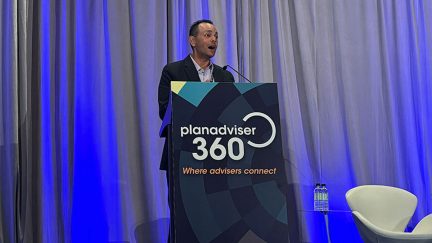Want the latest retirement plan adviser news and insights? Sign up for PLANADVISER newsletters.
Nurses’ Retirement Savings Need Urgent Care
The study report, “Defining Excellence: Nurses’ Savings Behaviors and Retirement Readiness,” says nurses’ retirement savings is in need of urgent care, as they are on track to replace only 59% of their ending income in retirement, a 26 percentage point gap from Fidelity’s suggested income replacement goal of 85%. Findings for the report suggest many nurses are well aware they face a retirement shortfall, with 63% concerned they will never be able to fully retire and four out of five wanting help to better prepare for retirement.
Despite their desire to prepare for retirement, only 14% of nurses take advantage of financial guidance. That number drops to 9% for younger nurses. In addition, only 27% of nurses who admitted not saving enough say they plan to seek retirement planning and guidance over the next 12 months to help them save more.
While acknowledging a need for guidance, the nurses queried for the report cite challenges to retirement planning:
- Lack of time: Heavy workloads, training and continuing education requirements, the possibility of a second job, and responsibilities at home leave little time for thinking about retirement.
- Work environment: Most nurses do not work at a desk and being on the go throughout their shifts leaves little opportunity to address retirement planning needs.
Such impediments hamper nurses’ ability to be proactive about their savings, Fidelity says.
Nurses’ total savings rates (employer plus employee contributions) are at 12.9%, which is within Fidelity’s suggested range of 10% to 15%. However, the report finds younger nurses (ages 20 to 29) have a savings rate below this, at 9.6%. Fidelity says simply increasing one’s savings rate by 1% could translate into an additional $180 of monthly retirement income (see “What That 1% Increase Can Do for Participants”).
For nurses who have received financial guidance, 33% report taking positive action, such as increasing their contributions to their retirement savings. According to the report, Fidelity’s experience suggests guidance is effective at helping nurses make the choice to save more, optimize their asset allocation, and create a plan for retirement.
By understanding the power of financial guidance, health care employers can play an important role in addressing the retirement readiness of their nursing work force, according to the report, which offers the following suggestions:
- The working environment of nurses often lacks a designated work and computer space, as well as variable floor shifts, making it challenging to properly address their finances. Effective engagement for nurses may mean less email and more onsite guidance, coupled with paper-based mailings. Employers can also consider experimenting with mobile-based communications.
- Promote onsite and phone-based guidance opportunities, as well as nurse-specific programs such as National Nurses Week (May 6 – 12, this year).
- Implement automatic annual increase programs and increase the default deferral rate to 6% in automatic enrollment programs, which are effective ways to promote increased savings rates.
- To help improve the savings rates among younger nurses, make enrollment easy. Encourage engagement from the start of one’s career with new-hire orientation materials that emphasize the company’s retirement program benefits and the power of saving early.
The report is part of Fidelity’s “Defining Excellence” series, which examines the savings behaviors of nearly 28,000 nurses enrolled in Fidelity workplace retirement plans across the United States. A copy of the report can be downloaded here.
You Might Also Like:

Plan Sponsors Remain Focused on Workforce Retirement Benefits

How to Establish Better Decumulation Options for Future DC Plans



